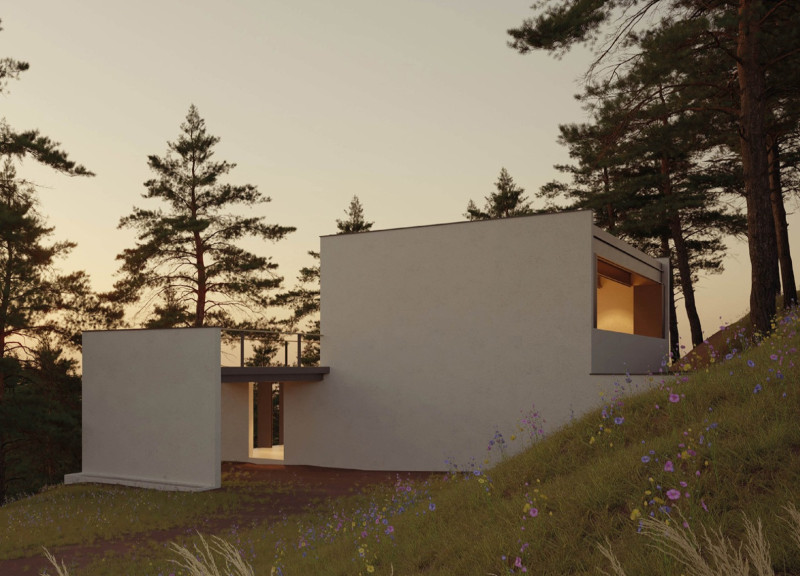5 key facts about this project
The project functions as a serene getaway, offering a variety of spaces that can accommodate individual retreats, group sessions, and communal living. At the heart of the design is the yoga shala, a spacious hall that invites natural light and is designed to harmonize with the outdoor environment. Large openings connect the interior to the landscape, allowing users to immerse themselves in the sensory experience of their surroundings while engaging in yoga practices.
The architectural design carefully considers the spatial organization, weaving together areas such as living quarters, garden spaces, and communal zones into a cohesive whole. Each section of this project serves a distinct purpose while contributing to the overall sense of community and peace. The layout is functional yet adaptable, with open-plan designs that allow for flexibility in use and movement. This layout fosters interaction among guests and encourages a shared journey of self-discovery and growth during their stay.
Materiality plays a crucial role in the project, reflecting both sustainability and local context. The use of concrete and stone provides structural stability and thermal performance, while wood flooring adds warmth and comfort. Steel elements are integrated thoughtfully throughout the framework, enhancing durability without compromising aesthetics. The introduction of thermopanels not only aids in energy efficiency but also supports the building's passive heating and cooling strategies, aligning with the project’s eco-friendly mission. Furthermore, the installation of solar panels exemplifies the commitment to renewable energy, allowing the retreat to operate sustainably.
Unique design approaches are evident throughout Vale de Moses, particularly in how the architecture interacts with its environmental context. Each structure is positioned to optimize views and natural light while maintaining privacy for its users. Elevated sections and terraces create visual interest and allow guests to engage with the landscape from various vantage points. The integration of natural water management systems reflects an understanding of regional climate and conservation, ensuring that sustainability is woven into the daily operations of the retreat.
With detailed architectural plans and sections illustrating the comprehensive design methodology, this project provides ample opportunity for deeper exploration. Interested readers can gain further insights into the architectural ideas and design approaches that have shaped this sanctuary by reviewing the project presentation. The thoughtful interplay between nature and built form, as explored through this retreat, highlights the potential of architecture to create environments that resonate with and enhance human experiences. Explore the architectural designs and engage with the visual and functional aspects that make this project a valuable addition to the realm of sustainable and restorative architecture.


























